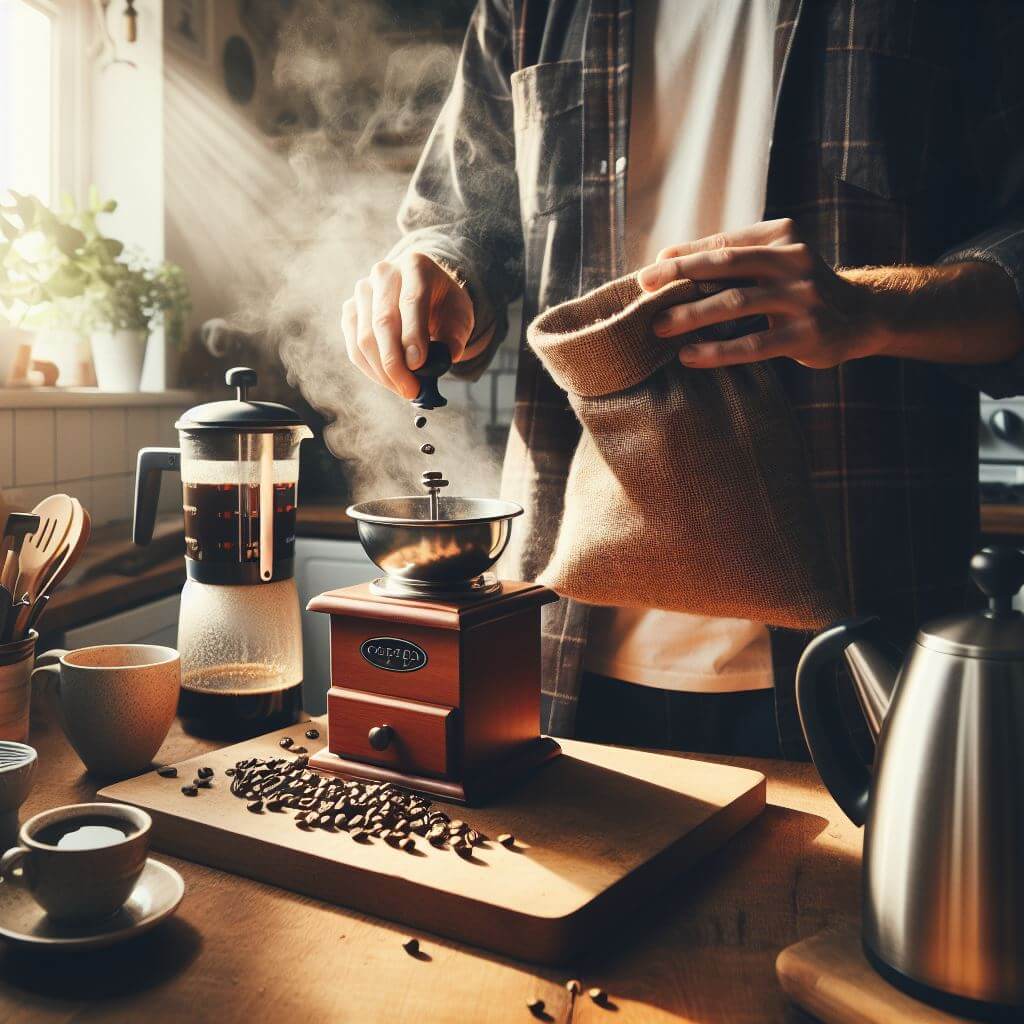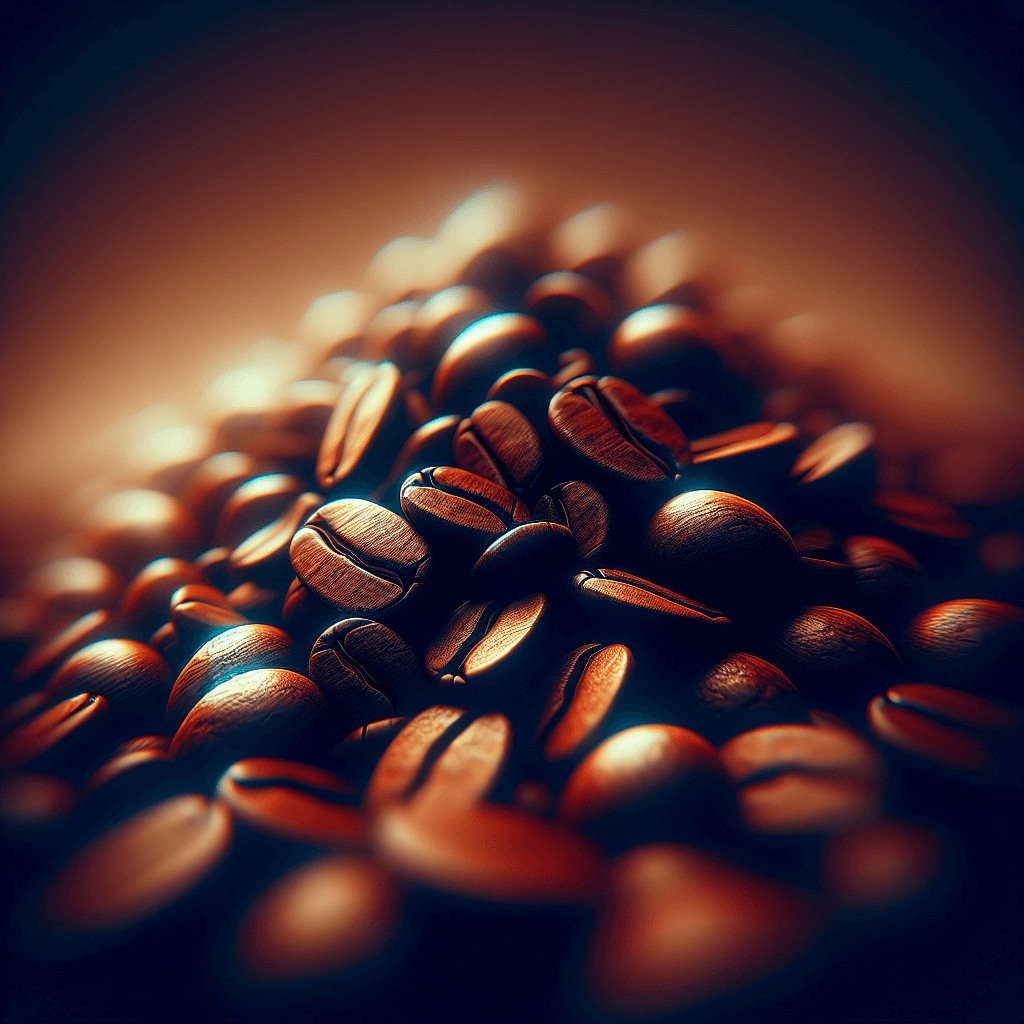
Mastering the basics of coffee brewing is the foundation upon which all great home baristas build their craft. This knowledge is based on the evaluation and understanding of the coffee bean itself. Different beans, from high-altitude Arabica to robust Robusta, have different flavors and textures that are affected by how they are roasted. The degree of roast, ranging from light roast to deep roast, plays a critical role in shaping the final flavor profile of the coffee. It’s about understanding how the unique characteristics of each grain can affect your morning cup.
Going from beans to brewing, grinding your coffee is a vital skill. The size of the grind needs to be precisely adjusted according to the chosen cooking method. A coarse grind works well with a French press, capturing the nuances of flavor without over-extracting, while a fine grind is needed for a rich and intense espresso. Mastering the grind is essentially mastering the art of consistency—achieving the same perfect size every time ensures that each cup of coffee is as satisfying as the last. In addition, the freshness of the grind plays a crucial role, and freshly ground beans provide the most fragrant and aromatic taste.
Equally important to mastering the basics is the art of extraction – the process by which water transforms ground coffee into the rich drink we love. The skill here involves understanding the fine balance of grind size, water temperature, and brewing time. Different brewing methods, from drip to espresso, require precise water temperatures to achieve optimal extraction. Too hot, and you risk burning the coffee, adding a bitter taste. Too cool and the flavors are trapped inside the mash, resulting in a flat and unpleasant drink. Brewing time also needs special attention; too long and the coffee will be over-extracted and bitter, too short and it will be weak and lack depth. In addition, the ratio of coffee to water can dramatically change the strength and taste of the drink, requiring careful calibration according to personal preference.
Basic Tools For The Home Barista
Making professional-quality coffee at home requires more than just passion and beans. This requires the right set of tools—a thoughtful choice that combines utility with the art of coffee making. At the center of this set of tools is a high-quality coffee grinder, a device that more than any other determines the quality of the taste of your coffee. Unlike blade grinders, they provide a uniform grind with precise grain control. This consistency is critical to achieving perfect extraction, as it ensures an even flow of water through the grounds, a fundamental aspect of brewing excellence.
When it comes to brewing equipment, the choice largely depends on personal preference and the type of coffee one likes. For espresso lovers, a reliable espresso machine is indispensable. These machines range from manual to fully automatic, with advanced models offering a precise level of control over every stroke, from temperature to pressure to timing. For those who prefer a softer cup, pour-over kits with elegant designs and simple mechanics provide an exciting brewing experience. Similarly, the French press offers a simple immersion method that can extract deep flavors from coffee. Each brewing method has its own unique appeal and learning curve, encouraging exploration and experimentation.
A key component that is often overlooked in the home barista’s toolbox is the kettle, especially for methods that require manual pouring of water. A gooseneck teapot with a thin spout provides unparalleled precision, promoting slow and steady pouring, which is essential for methods such as pouring. Electric models with temperature control can set the exact water temperature needed for optimal extraction, an often underestimated aspect of brewing coffee. This level of control can improve your brewing process, providing consistency that is difficult to achieve otherwise.
Precision in coffee preparation is not limited to grinding or brewing; it extends to the ratio of coffee to water. A digital scale sensitive to small steps becomes an important tool in the search for the perfect cup. The difference between a good and a great cup of coffee often comes down to grams: too much coffee can lead to over-extraction and bitterness, while too little results in a weak, underpowered brew. Scales ensure that you can accurately recreate your favorite recipes, making them an invaluable asset in the home barista’s arsenal.
Brewing Techniques and More
Delving deeper into the realm of homebrewing, and exploring a variety of brewing techniques, is where creativity and craftsmanship truly flourish. Each method—whether espresso, pour-over, Aeropress, or cold—has its signature, a unique imprint that affects flavor, aroma, and body. Applying these different techniques not only expands the range of coffee experiences at your disposal but also deepens your appreciation and understanding of what makes each cup special. For example, mastering pour-overs requires a steady hand and patience to reward the brewer with a clean, aromatic cup that highlights the subtle flavors of the coffee. In contrast, the espresso method, a bastion of coffee culture, requires precision and control over pressure and temperature, providing a concentrated and bold punch that serves as the basis for many coffee drinks.
The journey in brewing technology opens up avenues for further exploration, particularly in the world of milk-based coffee drinks. With a foundation for making espresso, the home barista can venture into the art of making lattes, cappuccinos, and macchiatos. This transition is marked by learning how to steam and froth milk, adding texture and warmth to soothing creamy drinks. Achieving the perfect microfoam—silky and smooth, with tiny, barely noticeable bubbles—is a challenge in itself. This art, which requires an understanding of milk composition and mastery of technique, often takes a lot of practice to perfect.
However, mastering brewing techniques and texturing milk is only the beginning. The world of the home barista craft goes beyond the brewing itself, extending to the maintenance of the equipment and the freshness of the coffee. Knowing how to take care of your tools, from cleaning your espresso machine to cleaning out old grounds from your grinder, makes a big difference to the taste of your coffee. Similarly, understanding the importance of fresh beans and the role of proper bean storage—keeping beans in a cool, dark place in an airtight container—can make the difference between a good cup of coffee and an exceptional one.
Applying these advanced aspects of coffee preparation not only improves the quality of your coffee; it transforms brewing from an everyday routine into a dynamic craft. This encourages a continuous learning process, where there is always a new technique to learn, another bean to try, or a subtlety of flavor to discover. For enthusiasts, this continuous communication with coffee offers endless opportunities for creativity and enjoyment, turning each cup into a celebration of the rich and complex world of coffee. In this way, the home barista goes beyond the basics of brewing, into a realm where skill, knowledge, and passion come together to create unforgettable coffee experiences, one cup at a time.

